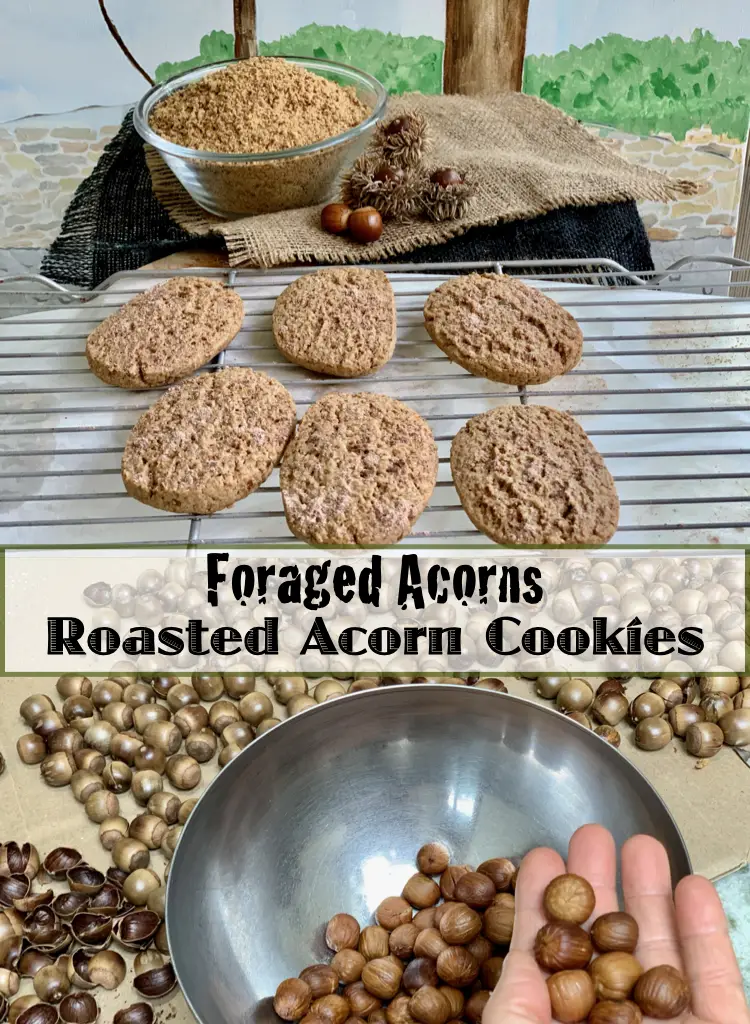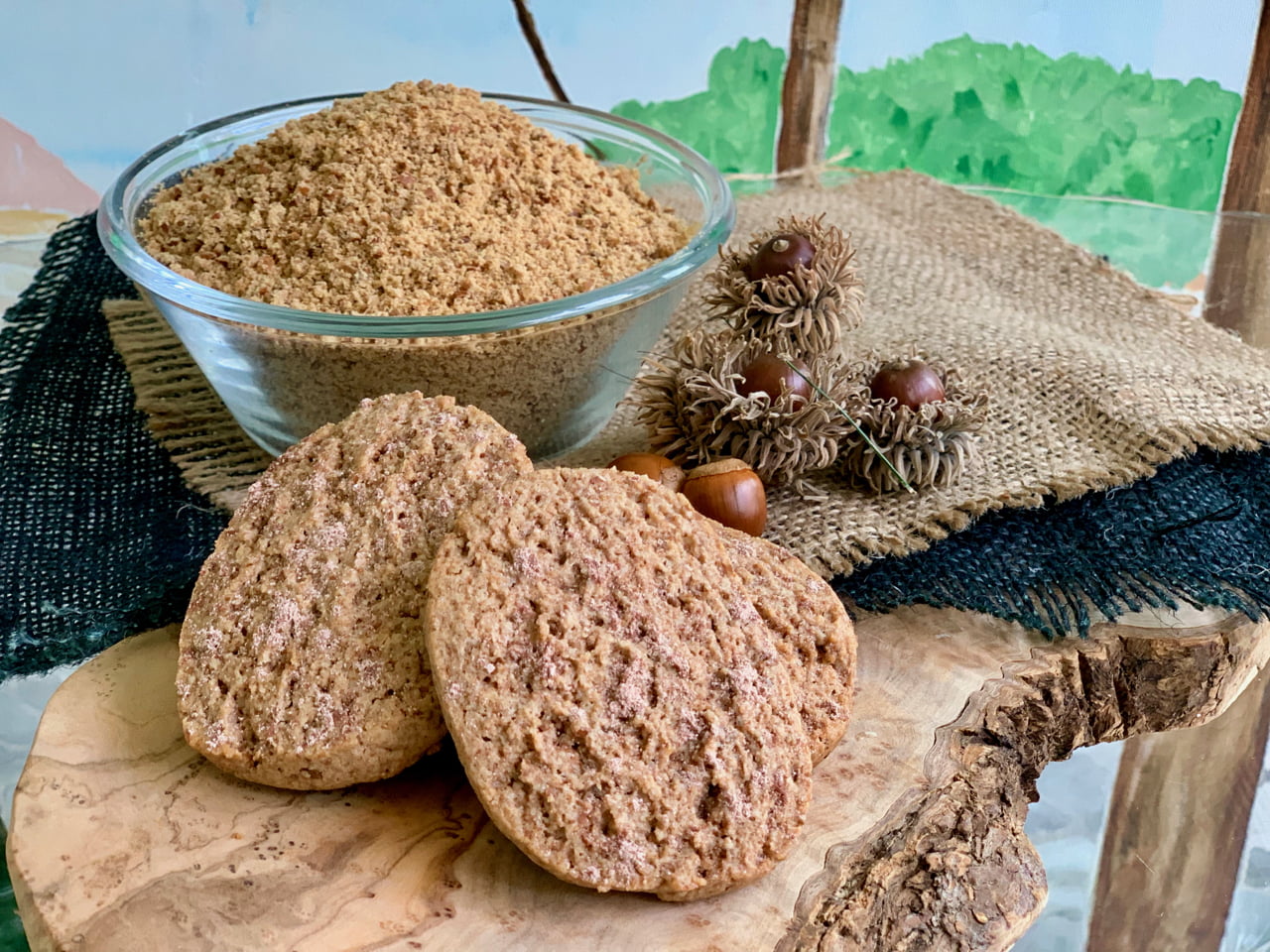Roasted Acorn Flour Cookies are nutty, foraged, and in your backyard, roasted acorns turned into flour for the most delicious cookies.
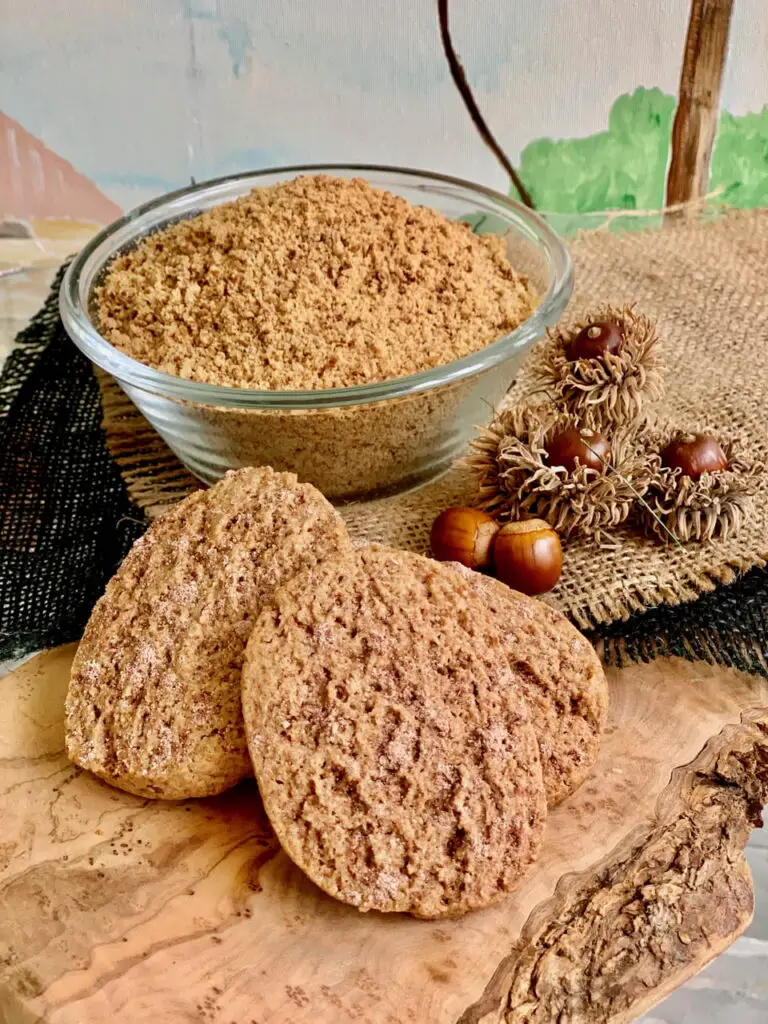
Acorns
While acorns, from the oak tree, play an important role in forest ecology and are depended on by a wide variety of natures wildlife for sustenance, they are not widely known to us humans as an embraced nut in the culinary world.
That all changed today for me as I spent time with my grandchildren, foraging a huge bucket of acorns, one of the largest crops of acorns I have seen in my yard in quite some time, and turned them into cookies!
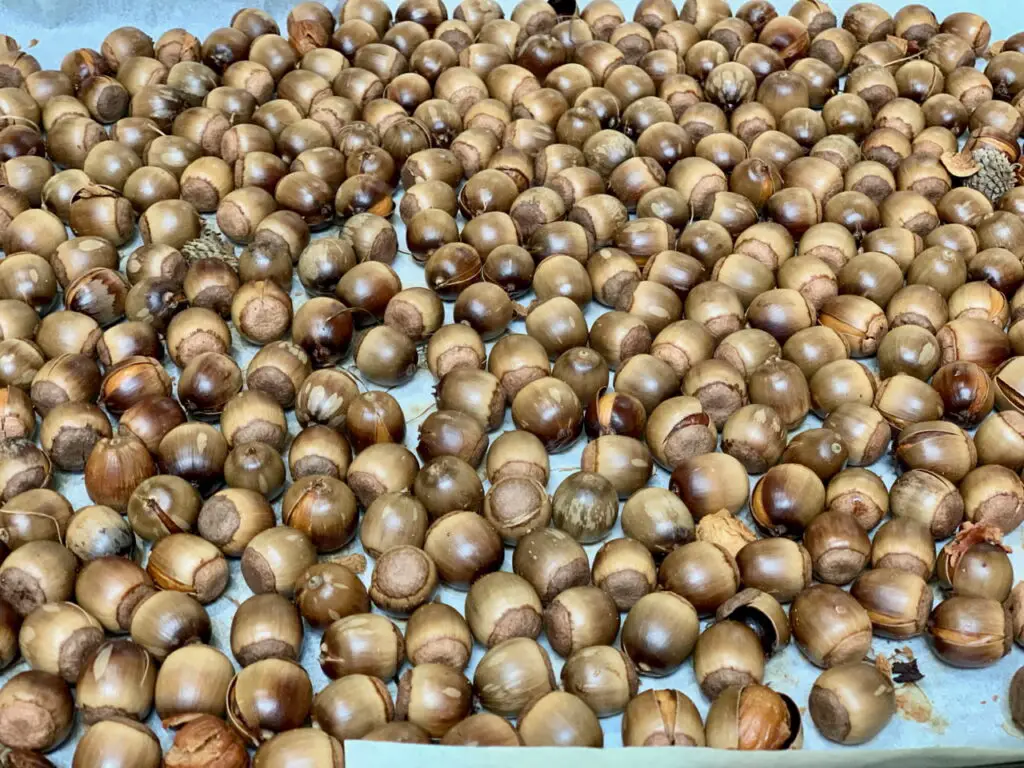
Acorn Flour
My first year to bake with acorn flour and it will not be my last! The harvest is huge, the process to prepare the flour was easy, though time consuming, and the flavor reminded me much of chestnut flour.
Today I baked cookies with the flour I processed but in the weeks ahead I will be trying a variety of other ways to use this luscious flour and still leave plenty acorns behind for the critters that will be looking for them in the cold winter months ahead.
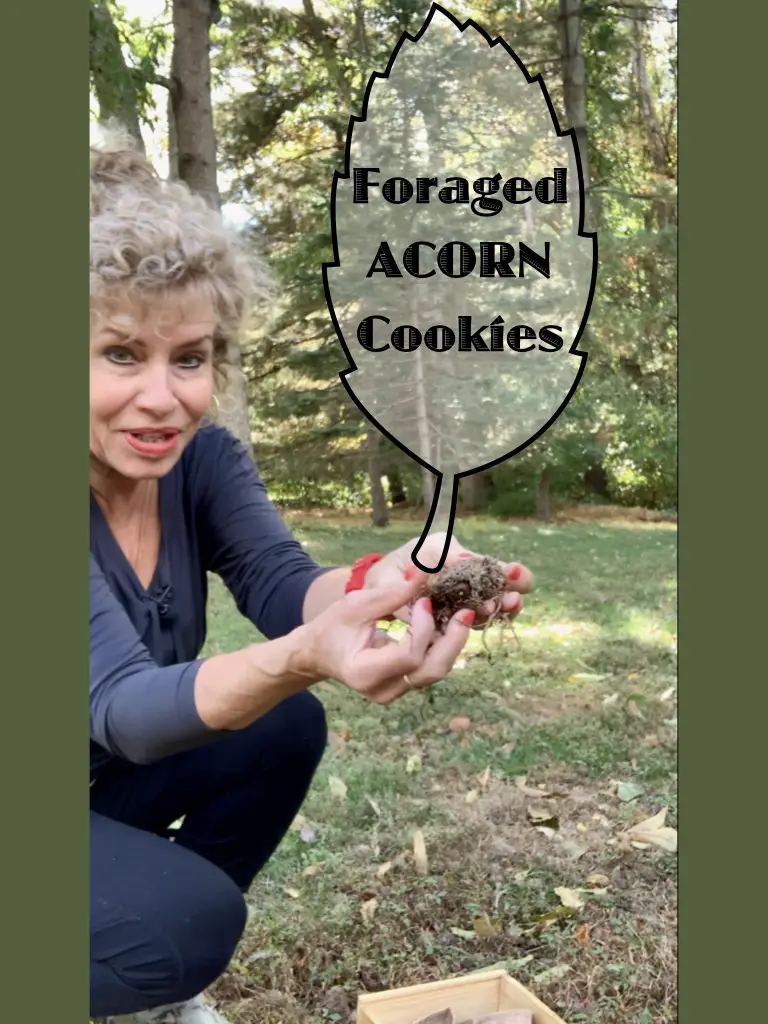
Foraging
Year after year the oak trees in my yard drop a gazillion of acorns into the ground. Today, along with my grandchildren, we set out to rake them up and put into the compost pile so yard maintenance could be tended to.
My grandson asked if these nuts were eatable. I admit, in all my life, growing up around oak trees, I never gave it a thought.
Today was the day I added acorn foraging to my repertoire of culinary experiences as my grandchildren and I foraged, boiled, roasted and ground these annual acorns into flour and then ultimately into cookies!
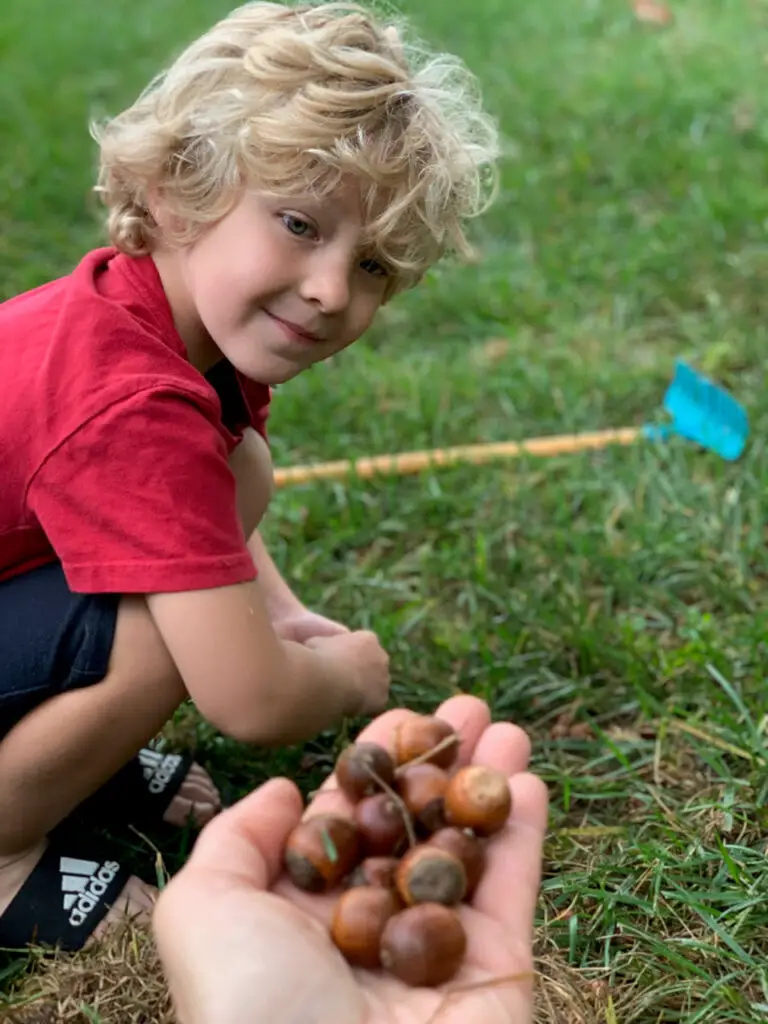
Acorn Flour Nutrients
First, of course, acorn flour is gluten-free, but then most nut flour is.
The wonderful news about acorn flour, especially if you have access to oak trees, is that it is loaded with fiber, fats, potassium, calcium and magnesium.
Yay! My yard has been trying to keep me healthy all these years and I am just discovering this!
Leaching Acorns
There is lots of talk about ‘leaching’ acorns before using them.
Leaching simply means to ‘remove’ a bitter taste from the nut before using them in cooking; a process whereby the acids are drained away from the acorn using water.
While some folks talk about cold leaching, which takes long hours of soaking, I prefer the method I have given you here.
This is how I’ve done chestnuts for years and it is perfect for acorns too.
Bring a large pot of water to a boil, drop the collection of acorns into the water and allow to boil (covered) for about 5 minutes.
Remove the acorns with a slotted spoon onto a baking sheet and pop into a 400 degree oven for 15 minutes.
How To Make Flour Out Of Acorns
The acorns will pop and some may burst open but within 15 minutes the acorns will crack open and be ready to shell once they have cooled.
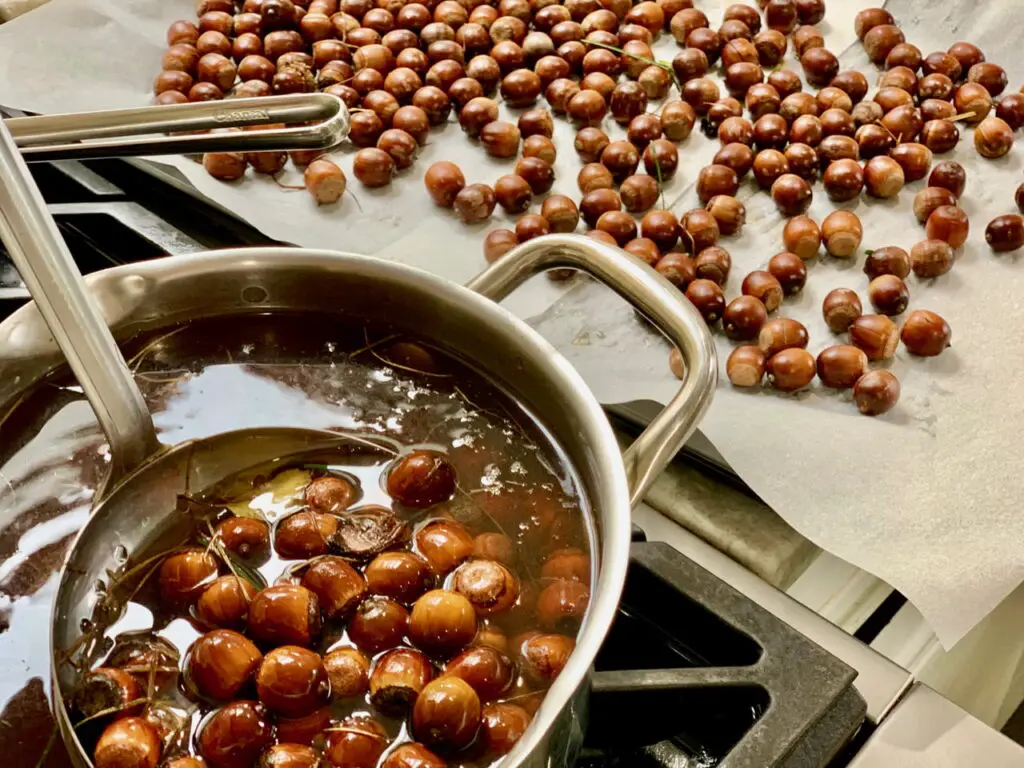
I use this same method to prepare chestnuts into flour around the holidays, ground and then freeze the flour for baking throughout the year.
Once you have shelled the cooled acorns, simply place them into a food processor and grind them into flour.
Store in the fridge for short term use or freezer for use throughout the year.
Making Acorn Cookies
Once the acorns have been prepared and ground into flour, the nut flour can be used the same as you would any other nut flour.
My first recipe with acorn flour was to make cookies. The nut flour handled and processed no differently than almond flour or chestnut flour.
The cookies rolled out beautifully and baked to crunchy, crisp perfection!
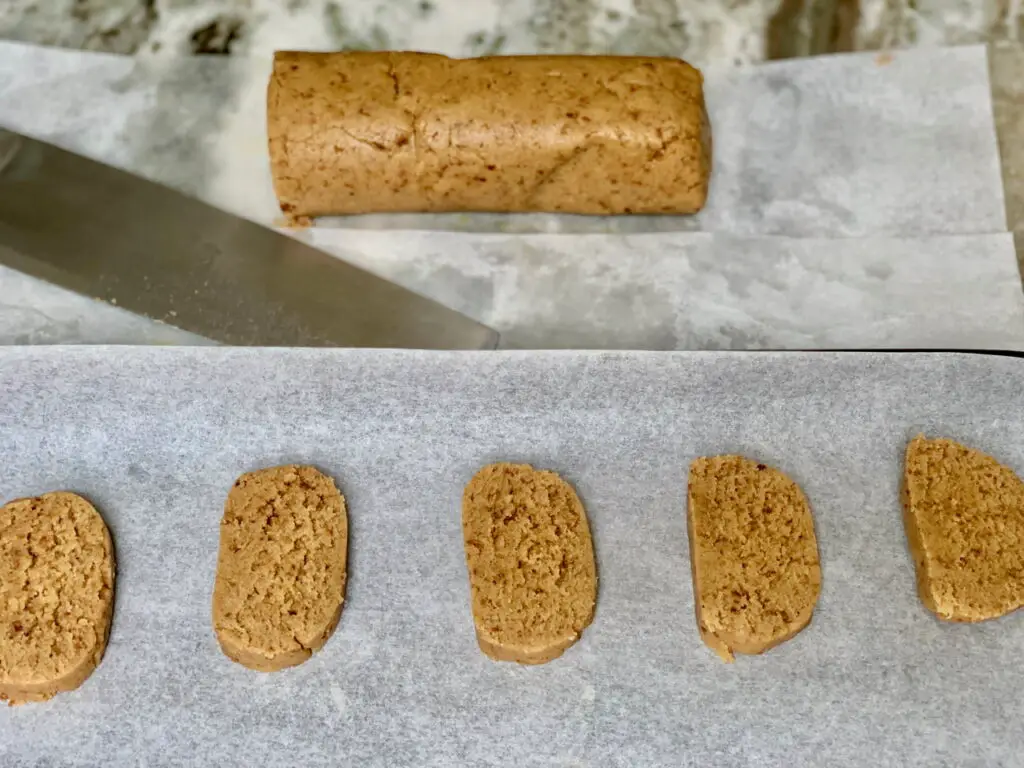
Ingredients Needed
- Acorn flour – made from acorns in the yard
- Acorn flour purchased from a reliable foraging company, if you don’t have access to acorns but would love to try these cookies!
- All Purpose Flour
- Baking powder
- Baking soda
- Salt
- Sugar
- Butter
- Egg
- Confection sugar
- Cacao powder
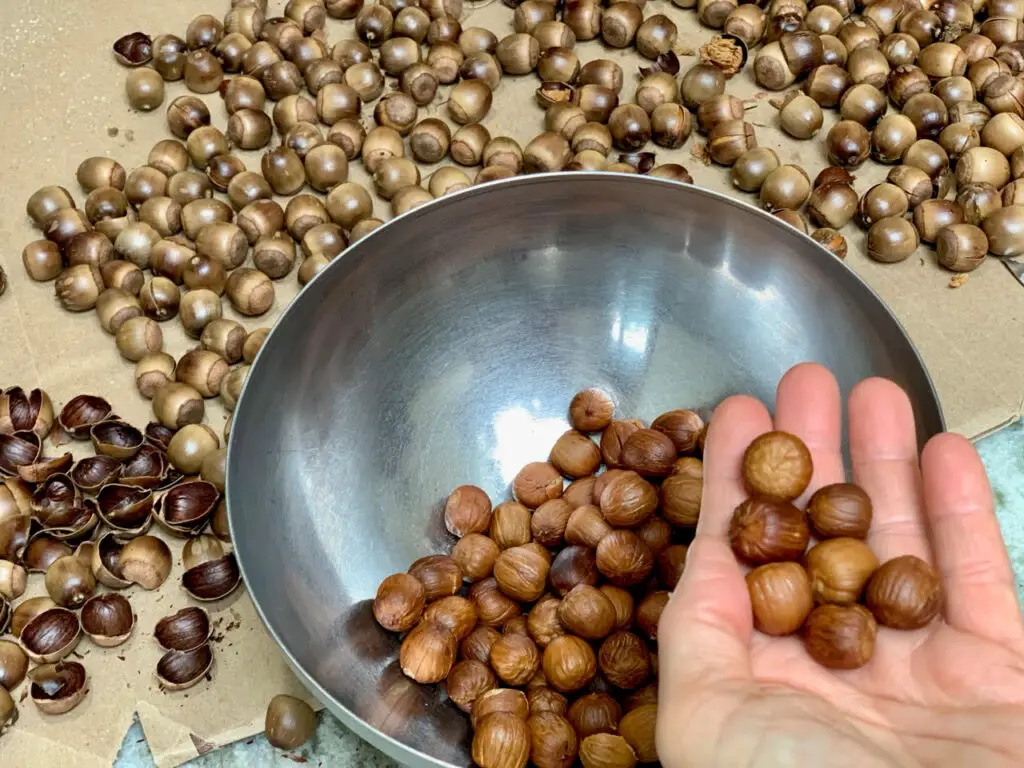
Equipment Needed
- Boiling pot
- Baking Cookie Sheet
- Food processor
- Measuring cup
- Measuring spoons
- Cutting board
- Chopping knife
- Oven
Acorn Flour To Be Used Just Like Chestnut Flour
As our culinary knowledge expands into far more interesting ingredients for cooking, I am thrilled to share with you a few favorite recipes with chestnut flour.
Absolutely try these recipes with chestnut and then make them again using acorn flour, and let me know which is your favorite!
- Chestnut Coffee Torta – is a popular Tuscan Torta (cake), of chestnuts, cacao, coffee, laced with a little rum, and chocolate.
- Salt Caramel Chestnut Cookies – with salt caramel filling and a wild splash of chocolate are not your grandma’s Christmas cookies.
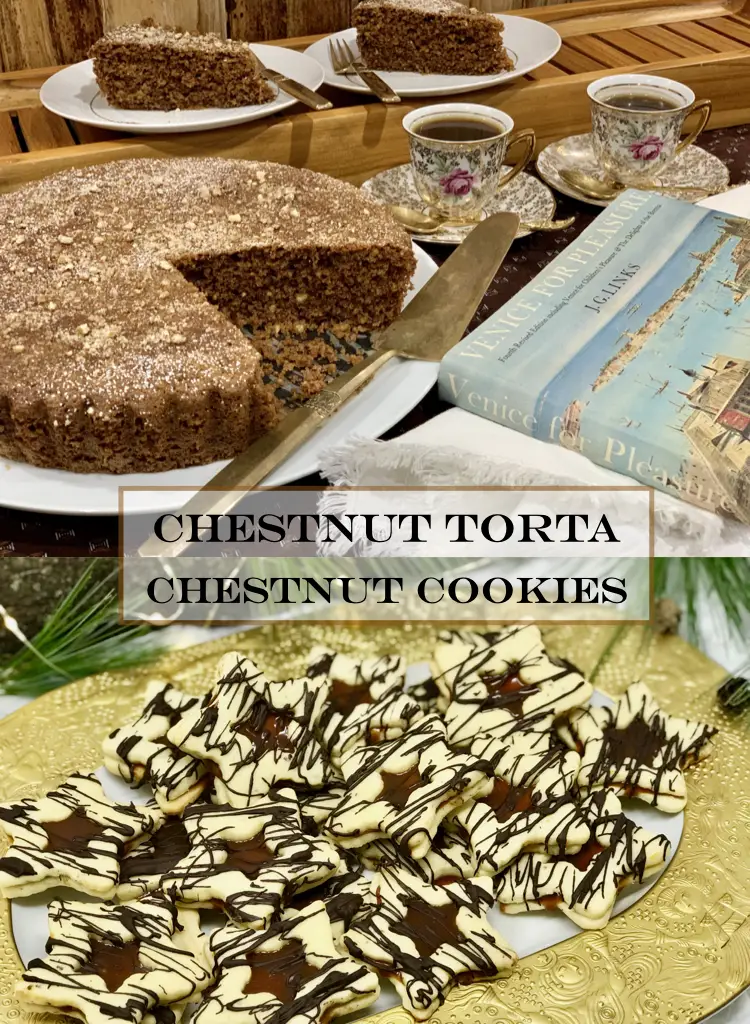
Roasted Acorn Flour Cookies Recipe
Equipment
- Large pot with lid
- Food processor
- Cookie sheet w/parchment paper
Ingredients
- 1 cup Acorn flour *see full story how to prepare acorns and grind
- 1 1/2 cups All purpose flour
- 2 tsp Baking powder
- 1/2 tsp Baking soda
- 1/2 tsp Salt
- 1/2 cup Sugar
- 8 oz Unsalted Butter or Coconut oil softened
- 1 Egg
- Dusting Powder
- 1 tbsp Cacao powder
- 1 tbsp Powdered sugar
Instructions
- To prepare the acorns – boil for 5 minutes, drain and roast at 400 degrees for 15 minutes. Peel and grind into flour. *This is very much the same process for preparing chestnut flour.
- Prepare Cookie Dough – In a food processor, or large mixing bowl with a hand mixer, place the dry ingredients and whisk. Add the butter and egg and pulse until the ingredients comes together into a dough ball.Adjust dough as needed, more flour if sticky, a few drops of water if dry.
- Place the dough onto a sheet of parchment paper, roll into a log and place into the freezer for 20 minutes, or the fridge for overnight.
- Preheat the oven to 350.Lay parchment paper on baking tray.
- Slice the dough into thin slices (1/4 inch), place on a prepared baking sheet. Bake for 15 to 20 minutes or until slightly golden brown around the edges.
- Mix the dusting powder together and sprinkle on the warm cookies.
Video
Notes
